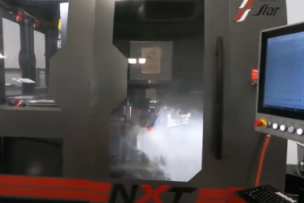Working with challenging medical-grade materials such as titanium, cobalt chrome or stainless-steel alloys requires smart techniques. Here’s what you need to know about precision medical machining.
Medical companies are continually developing new orthopedic implants from difficult and often proprietary alloys. From bone screws to hip replacement parts, these implants can be challenging projects for machinists. Geometries are often complex and tolerances can be tight.
The good news is that cutting tool manufacturers are keeping pace with these grueling demands by developing bold new insert geometries, tough but wear-resistant carbide grades and super-lubricious coatings.
Read more: Good Vibrations: How to Optimize Your Machine Setups to Minimize Chatter
Here are five important tips for achieving effective metal removal and getting the most life out of your cutting tools when working with these materials:
1. Stay sharp: PVD-coated tools work best across the entire range of medical-grade alloys. Cutting tool providers have developed specific grades for most of these materials and you should take advantage of them, especially on long-running or repeat jobs. Don’t settle for general-purpose carbide grades or coatings, and work with your suppliers to determine the best ways to machine any new material.




Talk to Us!
Leave a reply
Your email address will not be published. Required fields are marked *